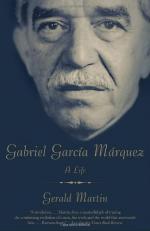|
This section contains 6,054 words (approx. 21 pages at 300 words per page) |

|
SOURCE: Jones, Anny Brooksbank. “Utopia and Other Commonplaces in García Márquez's El amor en los tiempos del cólera.” Modern Language Review 89, no. 3 (July 1994): 635-44.
In the following essay, Jones addresses García Márquez's perspective on male-female relationships in Love in the Time of Cholera.
A number of critics have noted what Verity Smith calls García Márquez's ‘growing concern with the position of women in society’ and the shifts in their characterization since Cien años de soledad (1967).1 For Sandra María Boschetto this process begins with Crónica de una muerte anunciada (1981), in which ‘García Márquez undertakes […] a view of women in which, although granted that the outline is more sketchy, the figure is more convincing.’.2 Later in the same article Boschetto nevertheless admits to being disturbed by certain episodes in Crónica, for example when Angela Vicario ‘falls madly...
|
This section contains 6,054 words (approx. 21 pages at 300 words per page) |

|


